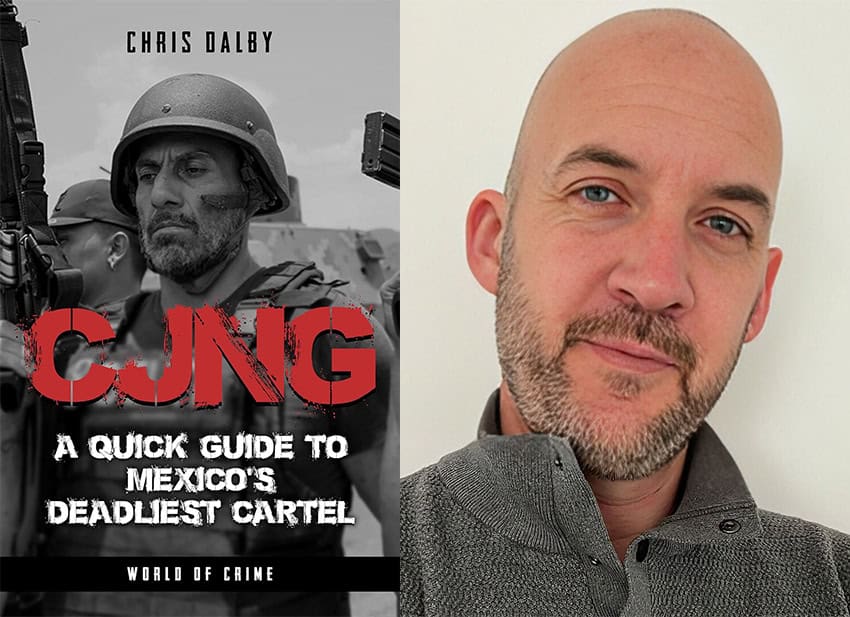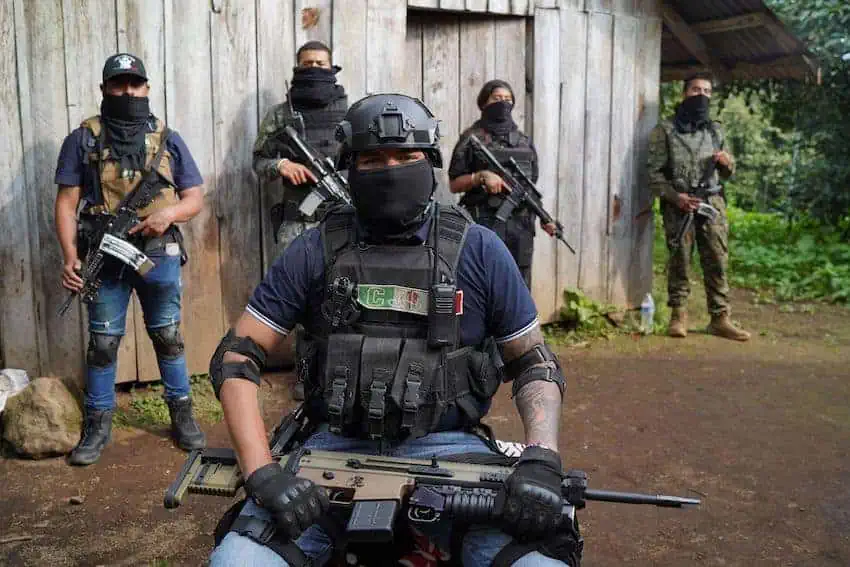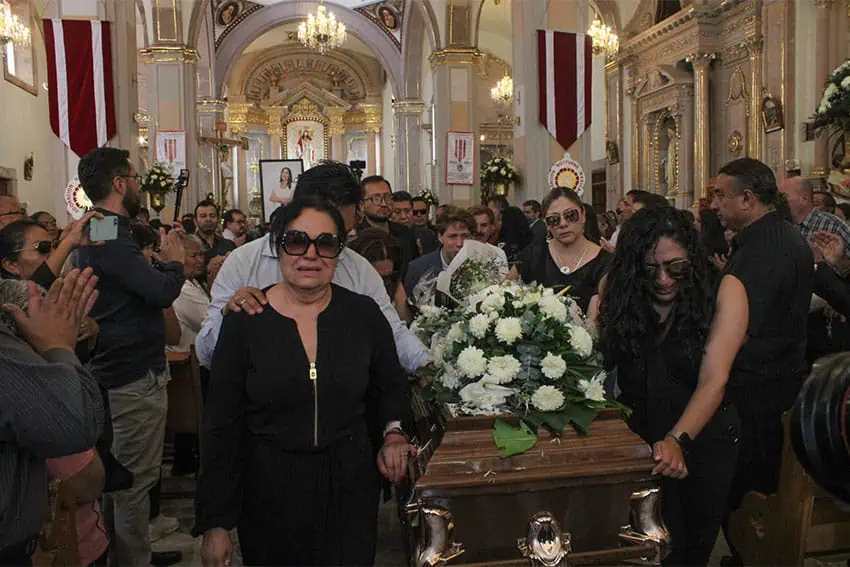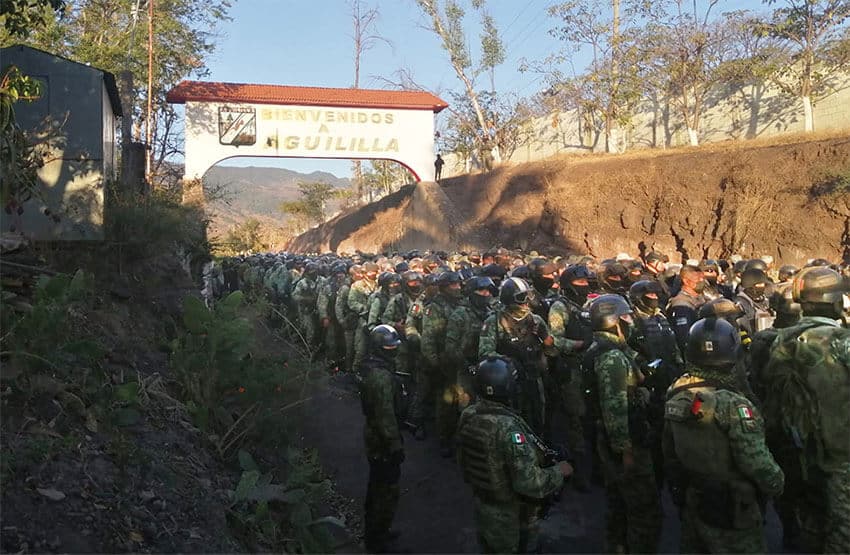Many of you probably know that the current electoral season in Mexico has been very violent — the most violent in modern Mexican history, in fact — with more than 30 candidates and political aspirants murdered and scores of other killings related in one way or another to the June 2 elections.
Meanwhile, Mexico’s overall homicide numbers remain very high, even though they have trended down since 2021, according to official data.
To gain a better understanding of the recent electoral violence and how it relates to Mexican cartels, and the national security situation more broadly, I spoke to Chris Dalby, director of the World of Crime media company and publishing house, former managing editor of the think tank/media organization Insight Crime and author of a new guide to the Jalisco New Generation Cartel, or CJNG.
Electoral violence and the most powerful Mexican cartels
We started off talking about the violence that has plagued the 2023-24 electoral process, which will culminate this Sunday with the election of almost 20,000 municipal, state and federal representatives.
“What we’re seeing in this electoral cycle is the continuation and worsening of electoral and political criminal relationships that have existed for decades in Mexico,” Dalby said.
He went on to explain that the ways in which the Sinaloa Cartel and the CJNG — Mexico’s two most powerful cartels — seek to hold sway over politicians, the candidates who aspire to public office and the electoral process in Mexico are “drastically different.”

The Sinaloa Cartel
Formerly headed up by the infamous — and now imprisoned — drug lord Joaquín “El Chapo” Guzmán, the Sinaloa Cartel is “often considered the largest and most powerful drug trafficking organization in the Western Hemisphere,” according to Insight Crime.
Dalby told me that the cartel has long-established criminal networks in areas it has criminal control over — including the states of Sinaloa, Sonora and Baja California — and therefore doesn’t need to be overly violent in order to maintain its influence, including over incoming politicians.
Those networks include corrupt municipal and state officials because “playing ball is just part of the game up there,” Dalby said.
“Of course, if there is a mayor or governor who doesn’t play ball, bodies are going to drop,” he added, noting that while the Sinaloa Cartel doesn’t have the same penchant for violence as the CJNG, it’s not afraid to use its firepower if need be.
The 2019 Battle of Culiacán, or Culiacanazo, is one example of the cartel’s willingness to use violence to get what it wants.

Dalby explained that in certain parts of Sinaloa, such as Chapo’s home town of Badiraguato or the capital Culiacán, “to reach the position of being a candidate … it’s understood you’re going to do business” with the Sinaloa Cartel, one faction of which is controlled by Chapo’s sons, known as Los Chapitos.
So entrenched is the influence of the Sinaloa Cartel in certain parts of northern Mexico, “you’re not getting nominated” as a candidate by party powerbrokers unless you’re willing to “play ball,” he said.
While Institutional Revolutionary Party (PRI) governments have governed Sinaloa and Sonora in recent decades, those two states — and Baja California — are now ruled by Morena, the party founded by President Andrés Manuel López Obrador.
Dalby cited the contents of journalist Anabel Hernández’s new book “La Historia Secreta: AMLO y el Cartel de Sinaloa” as evidence that some Morena politicians and officials are in cahoots with the Sinaloa Cartel.
(López Obrador, notably, last week called Hernández “the queen of fiction.”)
Before Morena came to power, the Sinaloa Cartel had “a very long relationship with the PRI” in northern Mexico, Dalby said.
“Dealing with the Sinaloa Cartel … was seen as the cost of doing business for politicians, police prosecutors, [and] even foreign investors,” he added.
The CJNG
The criminal organization headed up by the elusive Nemesio “El Mencho” Oseguera Cervantes operates “completely differently” from the Sinaloa Cartel, said Dalby, who has studied, analyzed and reported on crime in Mexico for over a decade.

“They don’t seem that interested in criminal governance, they don’t seem that interested in community relations, they don’t seem that interested in cultivating those long-term political ties that would eventually lead to not needing to kill people,” he said.
“Violence is woven into the MO of the Jalisco Cartel on a far more basic level,” Dalby added.
For that reason, electoral violence and murders of police are higher in states where the CJNG is in control or has a significant presence, he said.
“Every time there’s an election there’s a new crop of candidates to conquer, so to speak. So you either convince them to play with you or you eliminate them,” Dalby said.
“… That’s why in the last two or three [electoral] cycles, the Jalisco Cartel has been the [Mexican cartel] connected to most political violence,” said the organized crime expert.
He asserted that while the CJNG is “not the biggest cartel” and “not the richest cartel — that’s Sinaloa” — it is “the principal security threat to Mexico”
Dalby said that a lot of flare-ups of violence in Mexico are due to the CJNG moving in on territories controlled by other criminal groups. Sometimes, the ensuing turf wars last for years.
For example, Dalby noted, the CJNG’s fight with the Santa Rosa de Lima Cartel over the fuel theft racket in Guanajuato — Mexico’s most violent state in terms of total homicides — has being going on for longer than World War II.
He also said that cartels, including the CJNG, are “much more horizontal that we think,” explaining that plaza bosses — criminal leaders that control a particular territory for a criminal organization — have “immense leeway to act as they see fit.”
The murder of Morena’s mayoral candidate in Celaya
Expanding on his point about plaza bosses, Dalby mentioned the murder in April of Morena’s mayoral candidate in the Guanajuato city of Celaya, Gisela Gaytán, allegedly by CJNG members.
If it was the Jalisco Cartel who killed her, “I’m not certain that’s a decision that Mencho would be taking,” he said.

“That’s probably the CJNG plaza boss in Guanajuato or in Celaya who thinks that that candidate is likely to win and is not going to play ball and is [therefore] worth taking out,” Dalby said.
Concentration of violence at the municipal level
Political violence in Mexico is most common at the municipal level, at which candidates and officials are usually more accessible to the public and have small or non-existent security details.
Indeed, the majority of candidates killed during the current electoral cycle aspired to become municipal mayors.
Further explaining the concentration of political and electoral violence at the municipal level, Dalby noted that killing a governor or a gubernatorial candidate is “going to bring you more heat” than murdering a mayor or someone running for that office.
Turning his attention back to the CJNG, Dalby said that that cartel engages in the “systematic extortion of everything,” including the budgets of municipal governments.

The CJNG routinely demands that 10% to 15% of municipal budgets be paid “straight into their bank accounts,” he said.
Dalby added that the Jalisco cartel also demands “help” from municipal officials including mayors to “extort every industry in your town,” which depending on the location could include sectors such as avocado production and ranching.
Why has electoral violence increased since Morena came to power?
I asked Dalby why electoral violence has worsened since President López Obrador took office and since Morena came to power in many of Mexico’s states, including the three states — Chiapas, Guerrero and Michoacán — that have recorded the highest number of candidate murders this electoral cycle.
“Morena as a party doesn’t have a long institutional culture” and therefore doesn’t have long-established political networks, he told me.
“Dealing with Morena is dealing with individual people and that of course can lead to friction because … you don’t have instructions from up high saying ‘you deal with the cartel or otherwise you’re dead,’” Dalby said.

“Every [Morena] mayor, every governor has a little bit more flexibility and that either maximizes the opportunity for corruption or maximizes the opportunity for violence,” he added.
During the current electoral cycle, it should be noted, Morena candidates have been killed in significantly higher numbers than those of any other party.
Can violence in Mexico be reduced in a meaningful way?
Toward the end of our conversation, I asked Dalby whether, in his view, it was in fact possible to reduce violence in a meaningful way in Mexico given that the country is on the doorstep of the world’s largest market for illicit drugs, is located between the U.S. and cocaine-producing countries in South America, is a fentanyl manufacturing hub and is home to criminal organizations fiercely competing to control the illegal narcotics trade.
“Sustained double-digit drops” in homicide numbers would take years and “a level of political stability and policy stability from government to government” in Mexico and the United States that “shows no sign of being realistic,” he told me.
While official homicide numbers — the accuracy of which some analysts question — have declined since 2021, “AMLO has done nothing, precisely nothing, to stop the cartels — no new ideas, no strategy,” Dalby asserted.
Returning to the question of violence reduction, he said it is possible to bring murder numbers down significantly at a local level — in a certain region, for example — by “flooding an area with troops and keeping them there.”
However, that strategy can be “hugely costly” in terms of deaths of security personnel, Dalby said.
He stressed the importance of conducting rigorous investigations into cartels and their illicit activities, and said that Omar García Harfuch — security minister in Claudia Sheinbaum’s Mexico City government and target of a cartel attack in 2020 — is one official who has done that.

If Sheinbaum wins the presidency this Sunday, as polls suggest she will, and García Harfuch — also a former Criminal Investigation Agency chief — gets a position in her cabinet, “I have some hope that there will be some good investigation because … he has consistently investigated cartels,” Dalby said.
He said that “following the money” can be a particularly valuable strategy, but portrayed the efforts of Mexico’s Financial Intelligence Unit — which in recent years has frozen thousands of bank accounts linked to criminal organizations — as inconsequential.
“Since the war in Ukraine started, the U.S. and the E.U. have shown an ability to track Russian funds around the world, freeze them and choke the Kremlin’s financial resources,” Dalby said.
“Cartels move tens of billions of dollars through shadowy banking practices, through Chinese money laundering, through black market peso exchange and through crypto currency — that can be followed” he said.
Dalby also said that the legalization or decriminalization of drugs can be a successful strategy against cartels, noting that demand in the United States for Mexican marijuana “plummeted” due to widespread legalization of cannabis in the U.S.
However, he called the widespread decriminalization of hard drugs in the United States a “pipe dream.”
Decriminalizing drugs “means having a support system for addicts, it means creating a domestic production and distribution [capacity] legally controlled by the government or private companies,” Dalby said. “That is legally very complicated, economically even more so.”
By Mexico News Daily chief staff writer Peter Davies (peter.davies@mexiconewsdaily.com)
* Chris Dalby’s book about the Jalisco Cartel, “CJNG: A Quick Guide to Mexico’s Deadliest Cartel” is available on Amazon.
